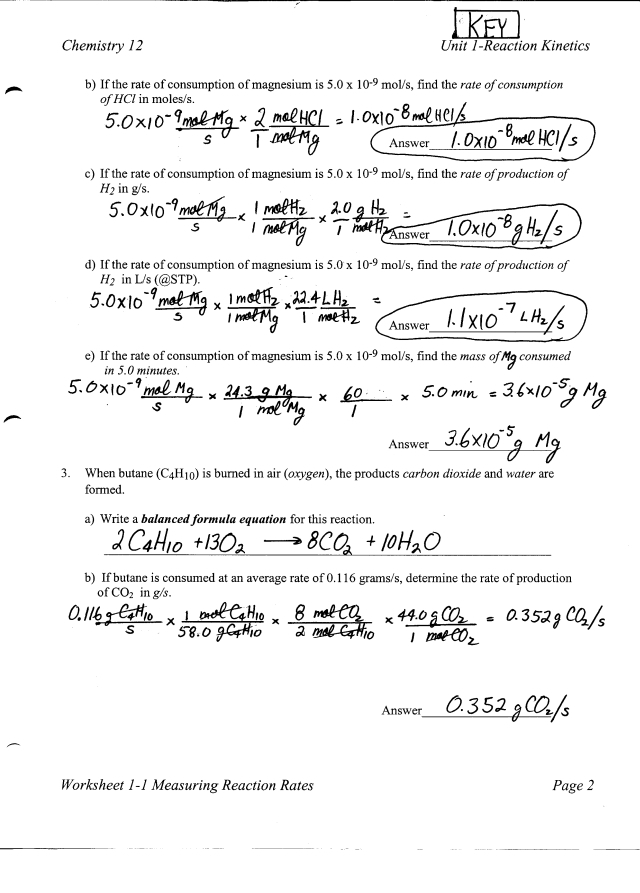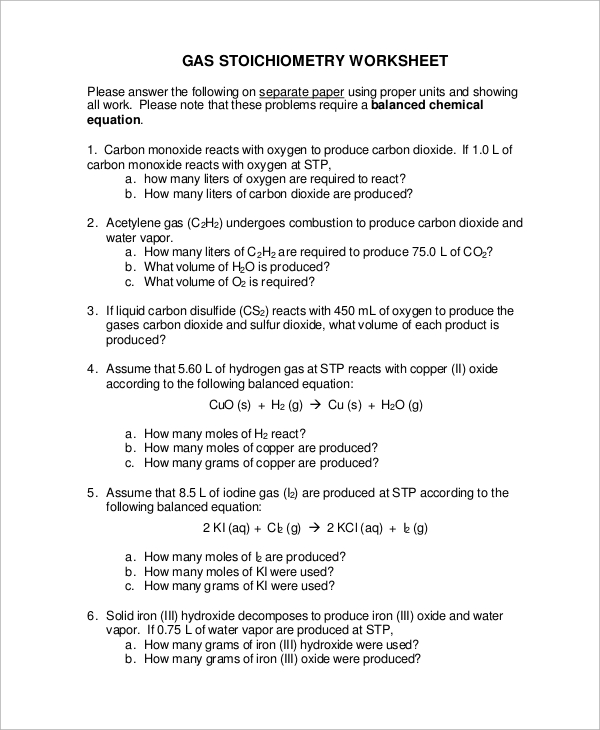Stoichiometry Solutions: Master Your Chemistry Worksheet Challenges

Chemistry can sometimes feel like learning a new language, and when it comes to stoichiometry, it's not just about speaking fluently; it's about solving problems accurately. Stoichiometry is the branch of chemistry that deals with the quantities of substances in reactions. This blog post will guide you through the essential techniques to master stoichiometry challenges on your chemistry worksheet, offering step-by-step instructions, practical examples, and tips to enhance your understanding.
Understanding Stoichiometry

Stoichiometry is essential for:
- Determining the amount of reactants needed.
- Calculating the quantity of products produced.
- Understanding the relationship between reactants and products in a chemical reaction.
The Basics of Stoichiometry

Before diving into complex problems, let’s review the basics:
- Balanced Chemical Equations: The foundation of stoichiometry. Every reaction must be balanced so that the number of atoms of each element on the reactant side equals those on the product side.
- Mole Concept: You’ll need to convert grams to moles, using the substance’s molar mass.
- Mole-to-Mole Ratios: These ratios are derived from the coefficients in the balanced equation.
- Limiting Reagent: The reactant that gets consumed first, determining the amount of product formed.
- Yield Calculation: Actual yield, theoretical yield, and percentage yield calculations.
Step-by-Step Problem Solving

Let’s tackle some typical stoichiometry problems you might encounter:
Problem 1: Mole-to-Mole Conversions

Here is how to solve a basic stoichiometry problem where you convert from moles of one substance to moles of another:
- Write the balanced chemical equation.
- Find the mole-to-mole ratio from the coefficients in the equation.
- Apply this ratio to convert the given moles of one substance into moles of the other.
Example:

Calculate the number of moles of oxygen gas produced from 3 moles of potassium chlorate (KClO3):
| Reaction: | 2KClO3(s) → 2KCl(s) + 3O2(g) |
| Mole Ratio: | 2 moles KClO3 : 3 moles O2 |
| Calculation: | 3 moles KClO3 × (3 moles O2 / 2 moles KClO3) = 4.5 moles O2 |

⚗️ Note: Always make sure your equation is balanced before applying stoichiometry.
Problem 2: Mass to Mass Conversions

In many scenarios, you’ll need to convert from the mass of one reactant to the mass of a product or another reactant:
- Convert the given mass of the reactant to moles using its molar mass.
- Use the mole-to-mole ratio from the balanced equation.
- Convert moles of the desired product back to mass using its molar mass.
Example:

Calculate the mass of aluminum chloride (AlCl3) produced from 25 grams of aluminum (Al):
| Reaction: | 2Al(s) + 3Cl2(g) → 2AlCl3(s) |
| Given: | 25 grams of Al |
| Mole of Al: | 25 g / 26.98 g/mol = 0.93 moles |
| Mole-to-Mole Ratio: | 2 moles Al : 2 moles AlCl3 |
| Moles of AlCl3: | 0.93 moles Al × (2 moles AlCl3 / 2 moles Al) = 0.93 moles AlCl3 |
| Mass of AlCl3: | 0.93 moles × 133.34 g/mol = 123.97 grams |
⚗️ Note: Pay attention to significant figures when calculating masses.
Problem 3: Limiting Reactants and Excess Quantities

Not all reactants are consumed in equal amounts; one will always run out first, becoming the limiting reactant:
- Calculate moles for all reactants provided.
- Determine which reactant will produce the least amount of product using the mole-to-mole ratios.
- The reactant producing the least product is the limiting reactant.
Example:

Given 4.0 moles of nitrogen gas (N2) and 7.0 moles of hydrogen gas (H2), calculate the amount of ammonia (NH3) produced:
| Reaction: | N2(g) + 3H2(g) → 2NH3(g) |
| NH3 from N2: | 4 moles × (2 moles NH3 / 1 mole N2) = 8 moles NH3 |
| NH3 from H2: | 7 moles × (2 moles NH3 / 3 moles H2) = 4.67 moles NH3 |
Hydrogen is the limiting reactant, and thus, only 4.67 moles of NH3 are produced.
Additional Tips for Stoichiometry Mastery

Here are some additional tips to excel in stoichiometry:
- Practice Balancing Equations: Regularly balance equations to become fluent.
- Understand the Concept: Beyond memorization, understand why reactions happen in certain ratios.
- Use Dimensional Analysis: This can help organize your calculations and conversions.
- Check Your Units: Make sure your units cancel out appropriately throughout your calculations.
Recapitulation

Mastering stoichiometry isn’t just about solving worksheet problems; it’s about understanding the core principles of chemical reactions. By focusing on balancing equations, understanding moles, and using ratios, you’ll not only solve problems more easily but also gain a deeper appreciation for chemistry itself. Remember, stoichiometry is the language through which chemistry communicates the quantitative aspects of reactions, providing insight into the natural world’s dynamic and often complex interactions.
Why is it important to balance a chemical equation?

+
Balancing a chemical equation is crucial because it follows the Law of Conservation of Mass, ensuring that the number of atoms of each element on the reactant side equals those on the product side, allowing for accurate stoichiometry calculations.
How can I determine the limiting reactant?

+
To find the limiting reactant, calculate how much product each reactant would produce if used up completely. The one producing the least amount of product is the limiting reactant.
What is the difference between theoretical yield and actual yield?

+
Theoretical yield is the maximum amount of product that could be formed from the given reactants as per stoichiometry. Actual yield is the amount of product actually produced in the lab or industry, which is often less due to various inefficiencies or losses.



